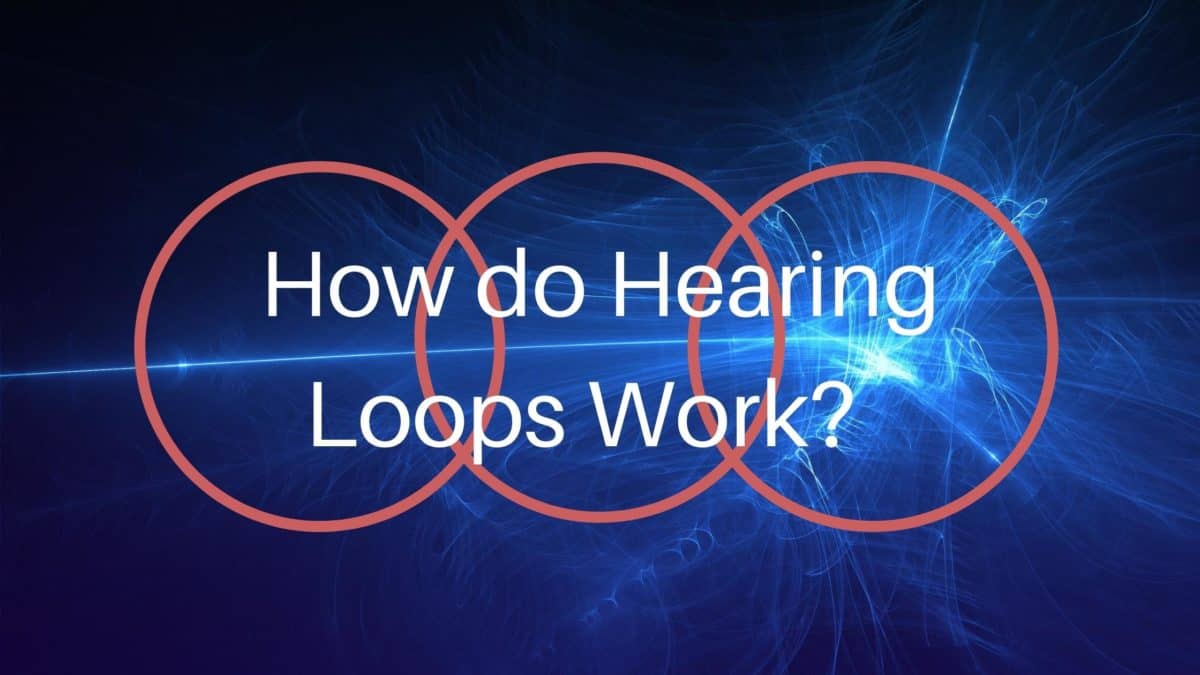- How to Recognize the First Signs of Hearing Loss - June 5, 2025
- Understanding the Connection Between Tinnitus and Weather - May 17, 2025
- The Most Unexpected Reasons Hearing Aids Can Malfunction - May 9, 2025
Hearing in public spaces can be difficult sometimes. Navigating environments like airports, auditoriums, classrooms and other public venues that tend to be noisier can strain hearing. This is particularly challenging for people who experience hearing loss. In addition to hearing aids, there are other technologies that are used to support hearing in a range of settings. Commonly referred to as assistive listening devices, these technologies maximize hearing by amplifying and readily transmitting sound. This includes hearing loops which is a type of sound system that is specifically used in larger spaces like performance venues, banks, and other public buildings. Hearing loop technology provides greater access to speech and sound, making it easier to hear and process sound in spaces that are often noisier.
Understanding How Hearing Loops Work
Also called an audio induction loop, hearing loops help transmit clearer sound in public spaces where distance and background noise can make it difficult to hear clearly. This works in the following way:
- A sound source – headset, microphone – sends sound to an amplifier.
- The amplifier processes the signal and sends a current through wires that are embedded in the floors and/or ceiling.
- This current creates a magnetic field or wireless signal that can be tapped into.
- Hearing aids and cochlear implants (as well as headphones) often have telecoils built in them which are tiny wires that can pick up the magnetic signal. You simply have to turn on the telecoil setting on these devices.
- Hearing aids can then convert the signal into sound that meets the wearers specific needs. Hearing aids can process and adjust the sound according to how the device is programmed for your hearing preferences.
Hearing loops reduce the impact of the acoustics of the room, background noise, and feedback which enhances the overall experience of hearing and processing sound in the space.
Benefits of Hearing Loops
Hearing loops are becoming more and more common in public buildings and spaces because of the numerous benefits they offer. The range of benefits include the following:
- Great Sound Quality: hearing loops send sound directly to a person’s hearing device through the telecoil receiver. This transmission reduces or eliminates background noise and other types of feedback noises that can prevent hearing clearly. Hearing aids are then able to adjust the sound in the specific ways that the device is programmed to do which meets the wearer’s hearing needs. This customization enhances sound quality which is sharpened and much easier to process and understand.
- Easy to Use: all people have to do to benefit from hearing loops is to switch the telecoil feature on! This easy and quick step allows the device to tap into the hearing loop technology and receive sound directly. Hearing loops prevent people from having to use additional equipment or struggle through noisy environments.
- Highly Accessible: hearing loops not only meet all requirements mandated by the Americans with Disabilities Act (ADA), but it is the only assistive technology that is compatible with hearing aids through the telecoil feature. Also, it is versatile and can be used in a vast range of places. This includes theaters, classrooms, banks, airports pharmacies, etc. which allow these spaces to be easily accessible and inclusive. Lastly, an unlimited amount of people can use hearing loops simultaneously.
- Simple & Discreet: hearing loop technology can be accessed independently, meaning that people can easily and independently access hearing loops. This offers discretion and supports people feeling more comfortable. Because it is so inconspicuous, it encourages more people to use it; increasing accessibility.
Hearing loops are a cost-effective technology that maximizes hearing for an unlimited amount of people in a public space. This expands accessibility and creates inclusive spaces that people can navigate with greater ease.
Using Hearing Loops
If you want to know more about hearing loops and how you can start using this assistive listening system be sure to visit your hearing healthcare provider. Your telecoil setting will need to be programmed to meet your specific hearing loss needs. Your provider will be able to set and ensure these settings and can show you how to operate this feature. Also, you can recognize looped venues by an internally recognized symbol that has a white outline of an ear with a blue background!

